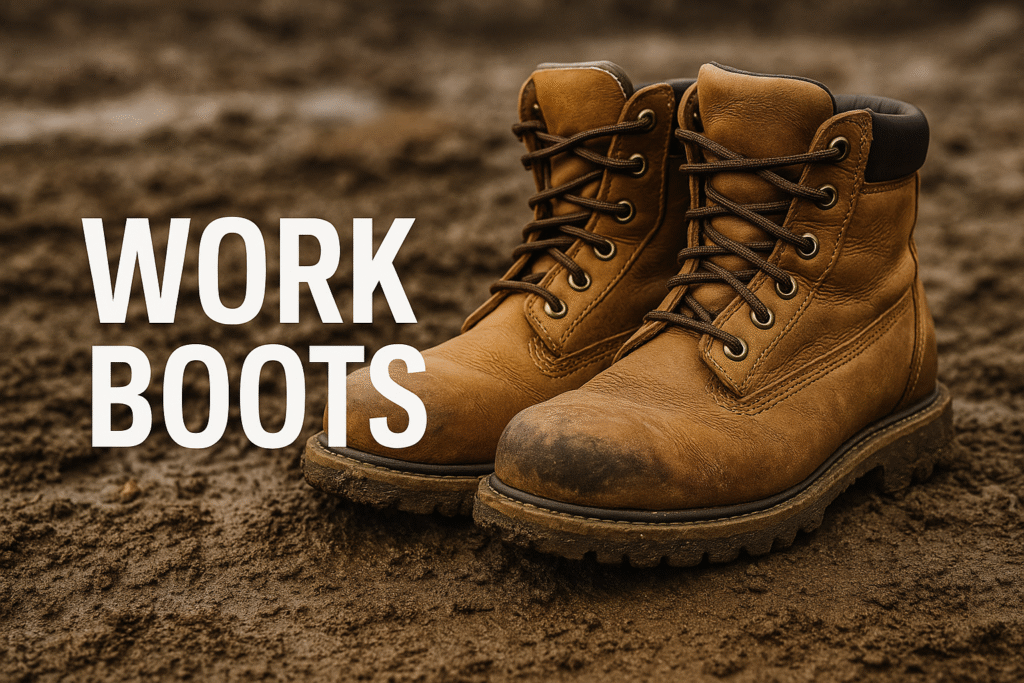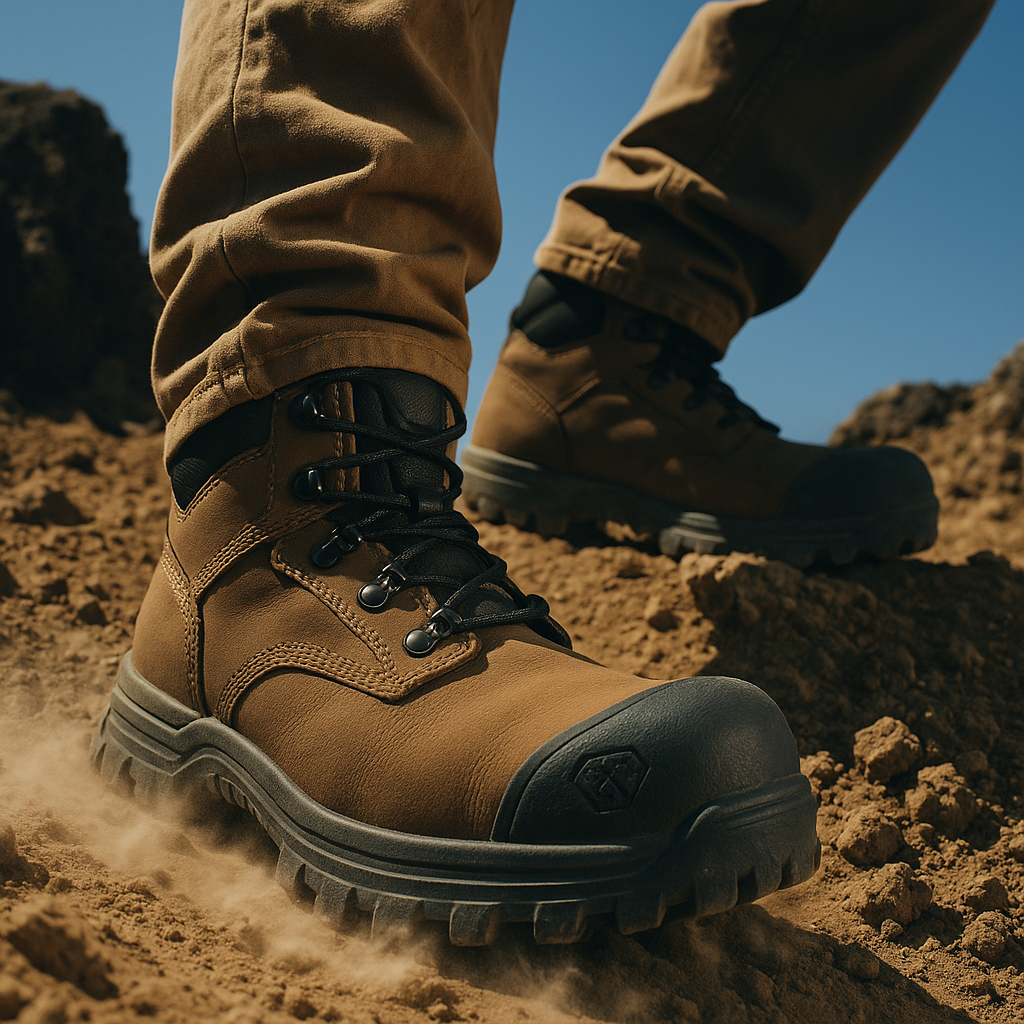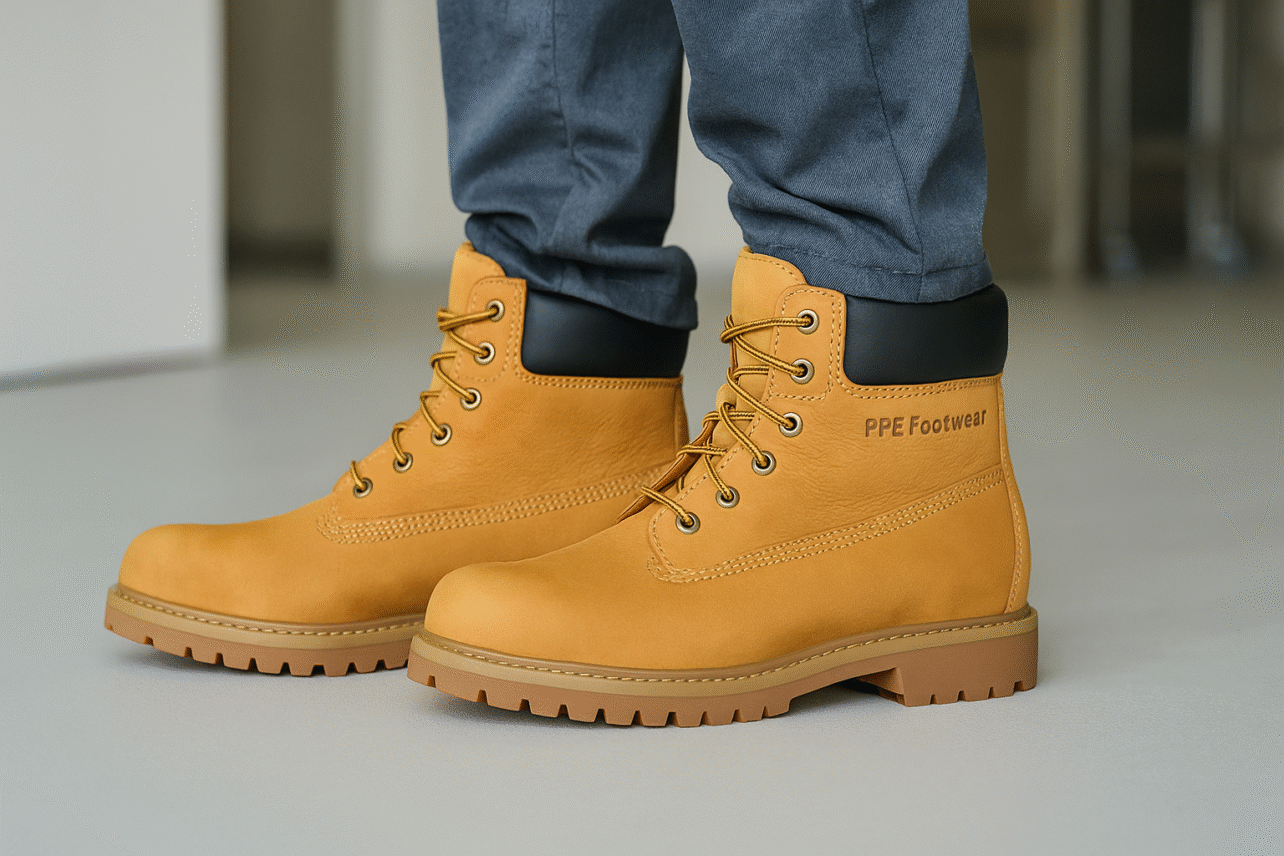Work boots are more than just part of a uniform—they are essential pieces of personal protective equipment (PPE) that guard against some of the most common and dangerous workplace injuries.
A quality pair of boots protects feet from crushing hazards, slips, punctures, chemical exposure, and even electric shock. In many industries, they are not optional—they are required for compliance and survival.

In this comprehensive guide, we’ll walk through everything you need to know about work boots, including types, protective features, regulatory standards, maintenance tips, and how to select the right pair for your job.
- Why Work Boots Are Essential for Safety
- Common Types of Work Boots and Their Applications
- Key Features to Look For in Work Boots
- Safety Standards for Work Boots
- Industries That Require Work Boots
- How to Choose the Right Work Boots
- Proper Maintenance of Work Boots
- Innovations in Work Boot Technology
- Common Mistakes to Avoid When Buying Work Boots
- Your Feet Deserve the Right Protection
Why Work Boots Are Essential for Safety
The feet are particularly vulnerable on industrial sites, construction zones, warehouses, and manufacturing floors.
Foot injuries can lead to permanent disability, loss of income, and expensive medical costs. According to the National Safety Council, over 60,000 foot injuries per year result in lost work time in the U.S. alone.
Work boots provide critical protection from:
- Heavy falling or rolling objects
- Punctures from nails or sharp materials
- Slips, trips, and falls
- Electrical hazards
- Burns from chemicals, molten metal, or hot surfaces
- Extreme weather conditions (cold or heat)
Without proper footwear, even a small accident can become catastrophic.

Common Types of Work Boots and Their Applications
Not all work boots are the same. Different work environments demand different protection levels. Below are the main types of work boots categorized by their safety features.
Steel Toe Boots
The most recognizable type, these boots have a reinforced toe cap made from steel. They protect against impact and compression injuries. Common in construction, manufacturing, and heavy industry.
Composite Toe Boots
These have toe protection made from non-metal materials like Kevlar, carbon fiber, or plastic. They are lighter and better for workers who pass through metal detectors, such as airport or security staff.
Alloy Toe Boots
Lighter than steel toe and usually made from titanium or aluminum. They provide similar protection to steel but with better comfort and less weight.
Metatarsal Guard Boots
These offer extended protection over the metatarsal bones (top of the foot), often with a flap or built-in shield. Useful in welding, foundry work, and jobs where molten materials or heavy loads are involved.
Slip-Resistant Boots
Designed with specialized soles to provide extra grip. Essential in kitchens, hospitals, construction sites, or icy outdoor environments.
Electrical Hazard (EH) Boots
EH-rated boots insulate the wearer from electrical shocks, protecting against live circuits up to 18,000 volts in dry conditions.
Puncture-Resistant Boots
Feature plates in the sole to prevent punctures from sharp objects like nails or glass, commonly required in demolition and renovation projects.
Key Features to Look For in Work Boots

When selecting work boots, don’t just focus on the safety label—consider the whole package. The following features impact both safety and long-term comfort:
- Toe protection (steel, composite, or alloy)
- Sole material and tread pattern for slip and oil resistance
- Waterproofing or moisture-wicking lining
- Breathability for hot environments
- Insulation for cold climates
- Shock absorption to reduce fatigue
- Ankle support for uneven terrain
- Break-in time and long-term comfort
A well-constructed boot should feel sturdy yet flexible and have reinforced stitching, secure laces or zippers, and good heel support.
Safety Standards for Work Boots
To ensure proper protection, work boots must meet specific safety standards. These are set by various national organizations:
ASTM F2413 (U.S.)
Specifies requirements for impact and compression resistance, electrical hazard protection, metatarsal protection, puncture resistance, and more. Look for tags showing codes like:
- I/75 C/75 (impact and compression rating)
- EH (electrical hazard)
- PR (puncture resistance)
- MT (metatarsal protection)
CSA Z195 (Canada)
Covers similar protections to ASTM but uses different labeling:
- Green triangle: Class 1 toe protection + puncture resistance
- Yellow triangle: Class 2 toe protection (lighter duties)
- White rectangle with orange Greek Omega: Electrical hazard protection
EN ISO 20345 (Europe)
Includes designations such as SB (basic protection), S1 (closed heel, antistatic), S2 (water-resistant), S3 (puncture resistance), etc.
Always choose boots that meet the required standard for your country and industry.
Industries That Require Work Boots
Many industries require work boots not only for compliance but also for practical safety reasons:
- Construction and Demolition: Steel toe, puncture-resistant, and slip-resistant boots
- Manufacturing: Metatarsal guards and EH-rated boots
- Warehousing: Lightweight alloy toe boots with good arch support
- Oil and Gas: Chemical-resistant, flame-resistant boots
- Forestry and Logging: Cut-resistant boots with excellent ankle support
- Healthcare and Food Services: Non-slip, waterproof, and comfortable walking shoes
- Electrical Work: Composite toe and EH-rated boots
- Mining: High-cut boots with steel toe, metatarsal guards, and insulation

How to Choose the Right Work Boots
Selecting the right work boots can mean the difference between comfort and fatigue—or safety and serious injury. Here’s how to make the right choice:
- Assess your work environment — Are there heavy objects? Wet floors? Electrical risks?
- Determine mandatory safety features — Check OSHA or CSA requirements.
- Prioritize comfort — Try boots on in-store, ideally late in the day when feet are most swollen.
- Check reviews — Look at long-term durability, fit, and ease of break-in.
- Don’t go cheap — Investing in quality may cost more upfront but saves money on injuries and replacements.
For a detailed Canadian safety gear selection guide, visit OHSE.ca.
Proper Maintenance of Work Boots
Even the best work boots won’t protect you if they’re poorly maintained. Regular upkeep ensures performance and longevity:
- Clean daily with a damp cloth to remove dirt and grime.
- Condition leather with a water-repellent treatment to prevent cracking.
- Dry properly—never use direct heat; instead, stuff with newspaper and air dry.
- Inspect for wear and tear—replace when the sole is worn, the toe cap is exposed, or the boot loses structure.
- Store in a cool, dry place away from direct sunlight.
If your boots are exposed to chemicals or biohazards, follow your employer’s decontamination protocol.
Innovations in Work Boot Technology
The world of work boots is evolving. Today’s boots combine safety with smart features:
- Moisture-wicking linings to keep feet dry
- Anti-fatigue technology like gel or memory foam insoles
- Lightweight materials like carbon fiber toes
- Smart boots with GPS tracking and sensors for fatigue or posture
- Ladder grips and toe bumpers for climbing-intensive jobs
Brands like Timberland PRO, Red Wing, and KEEN Utility are known for pushing the envelope in both protection and comfort.
Common Mistakes to Avoid When Buying Work Boots
- Choosing style over safety: Focus on function first.
- Wearing the wrong size: Ill-fitting boots cause blisters and long-term injury.
- Ignoring the break-in period: Allow time to adjust before wearing all day.
- Failing to replace old boots: If your boots are no longer protective, they’re a risk.
Always involve your safety supervisor or OHSE professional when selecting PPE footwear.
Your Feet Deserve the Right Protection
Work boots are the foundation of workplace safety. They anchor your body, absorb shock, prevent injuries, and can even save your life. Choosing the right pair requires understanding your work environment, safety standards, and personal comfort needs.
Don’t treat work boots like just another item in your gear. Treat them like the life-saving equipment they are. Whether you’re on a construction site, walking through a warehouse, or servicing electrical lines, the right pair of work boots will always have your back—and your feet.


No comments yet